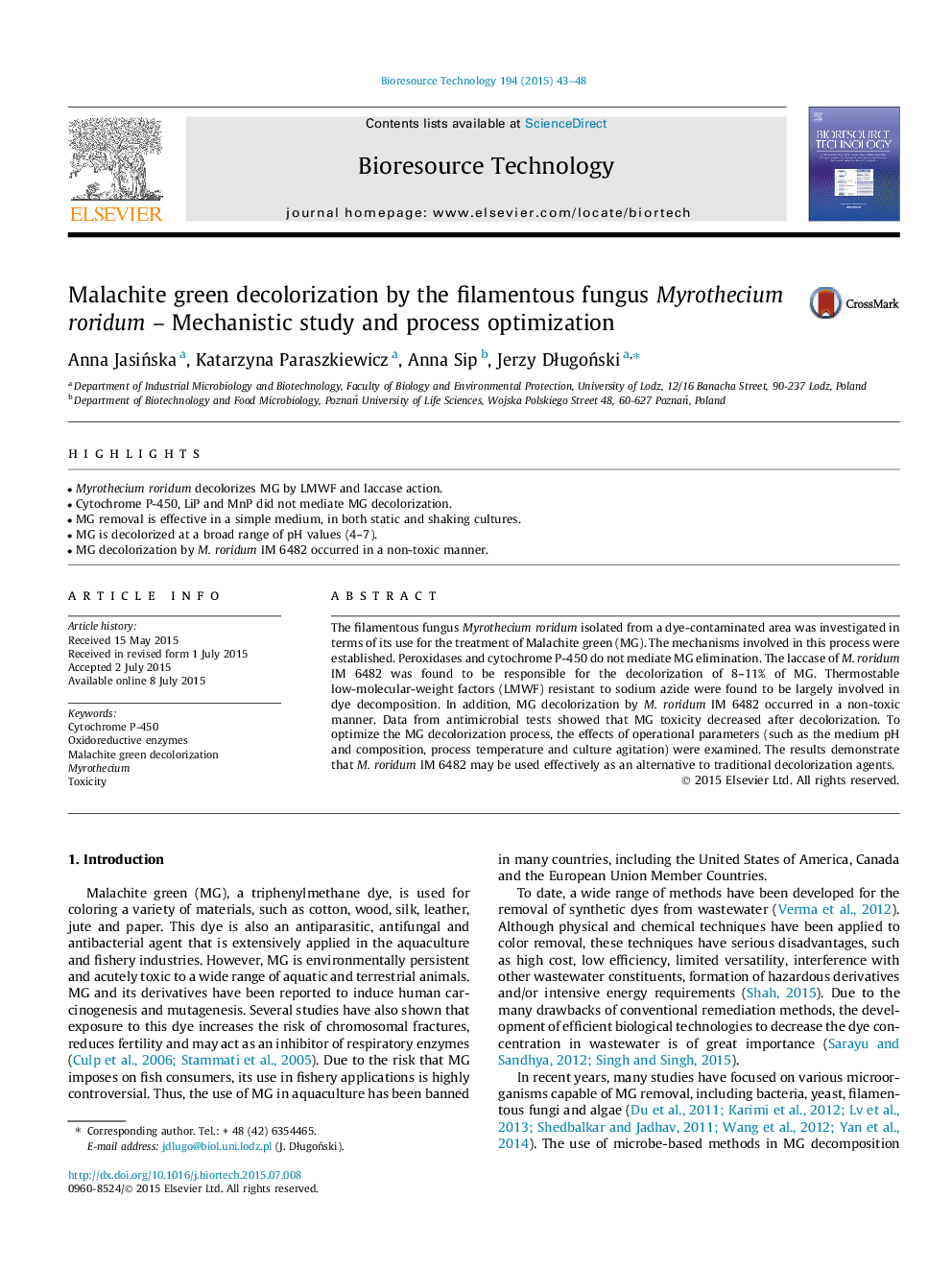| Article ID | Journal | Published Year | Pages | File Type |
|---|---|---|---|---|
| 7073682 | Bioresource Technology | 2015 | 6 Pages |
Abstract
The filamentous fungus Myrothecium roridum isolated from a dye-contaminated area was investigated in terms of its use for the treatment of Malachite green (MG). The mechanisms involved in this process were established. Peroxidases and cytochrome P-450 do not mediate MG elimination. The laccase of M. roridum IM 6482 was found to be responsible for the decolorization of 8-11% of MG. Thermostable low-molecular-weight factors (LMWF) resistant to sodium azide were found to be largely involved in dye decomposition. In addition, MG decolorization by M. roridum IM 6482 occurred in a non-toxic manner. Data from antimicrobial tests showed that MG toxicity decreased after decolorization. To optimize the MG decolorization process, the effects of operational parameters (such as the medium pH and composition, process temperature and culture agitation) were examined. The results demonstrate that M. roridum IM 6482 may be used effectively as an alternative to traditional decolorization agents.
Keywords
Related Topics
Physical Sciences and Engineering
Chemical Engineering
Process Chemistry and Technology
Authors
Anna JasiÅska, Katarzyna Paraszkiewicz, Anna Sip, Jerzy DÅugoÅski,
